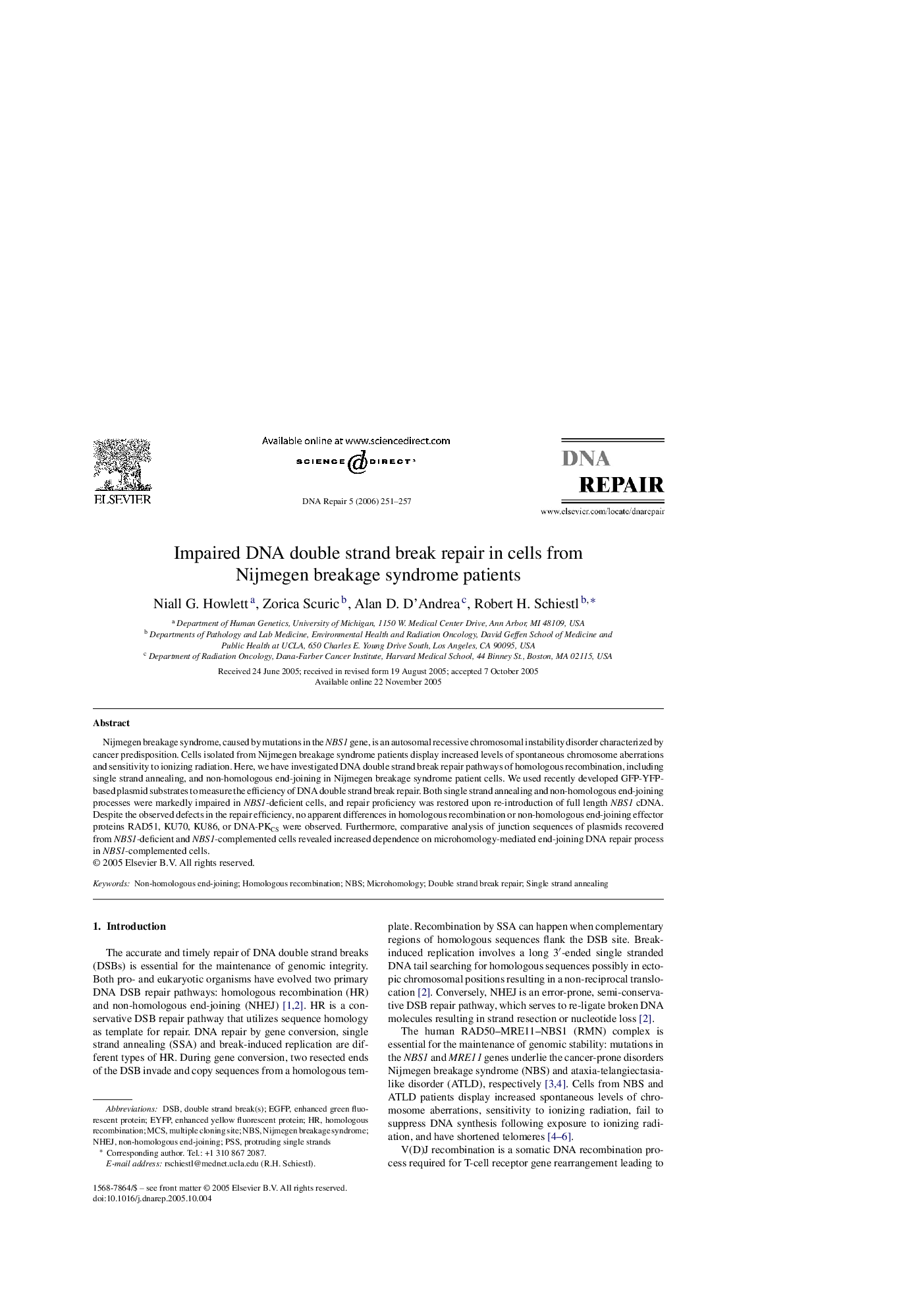| Article ID | Journal | Published Year | Pages | File Type |
|---|---|---|---|---|
| 1981522 | DNA Repair | 2006 | 7 Pages |
Abstract
Nijmegen breakage syndrome, caused by mutations in the NBS1 gene, is an autosomal recessive chromosomal instability disorder characterized by cancer predisposition. Cells isolated from Nijmegen breakage syndrome patients display increased levels of spontaneous chromosome aberrations and sensitivity to ionizing radiation. Here, we have investigated DNA double strand break repair pathways of homologous recombination, including single strand annealing, and non-homologous end-joining in Nijmegen breakage syndrome patient cells. We used recently developed GFP-YFP-based plasmid substrates to measure the efficiency of DNA double strand break repair. Both single strand annealing and non-homologous end-joining processes were markedly impaired in NBS1-deficient cells, and repair proficiency was restored upon re-introduction of full length NBS1 cDNA. Despite the observed defects in the repair efficiency, no apparent differences in homologous recombination or non-homologous end-joining effector proteins RAD51, KU70, KU86, or DNA-PKCS were observed. Furthermore, comparative analysis of junction sequences of plasmids recovered from NBS1-deficient and NBS1-complemented cells revealed increased dependence on microhomology-mediated end-joining DNA repair process in NBS1-complemented cells.
Keywords
Related Topics
Life Sciences
Biochemistry, Genetics and Molecular Biology
Biochemistry
Authors
Niall G. Howlett, Zorica Scuric, Alan D. D'Andrea, Robert H. Schiestl,
